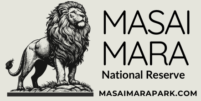By Road
Traveling to the Masai Mara by road offers a scenic journey through Kenya’s countryside. The most common route is via the Narok town, which is approximately a 5-6 hour drive from Nairobi, Kenya’s capital. The distance is about 240 kilometers, depending on which part of the reserve you’re headed to. The drive is fairly smooth on paved roads up to Narok, after which the road becomes rougher, especially as you approach the reserve, requiring a sturdy 4×4 vehicle for a comfortable ride. This route is ideal for those seeking to enjoy the landscapes and possibly stop along the way in areas like the Great Rift Valley viewpoint. It is recommended to hire an experienced driver or go with a tour operator familiar with the route to ensure a smooth journey. The road trip also provides flexibility, allowing travelers to stop at various towns, enjoy local markets, or take breaks for meals.
By Air
Flying to the Masai Mara is the fastest and most convenient way, especially for travelers looking to save time and avoid the bumpy roads. Flights from Nairobi to the Masai Mara typically take 45 minutes to 1 hour and are available from Wilson Airport. There are multiple daily flights offered by carriers such as Safarilink and AirKenya. The flights land at various airstrips within the Masai Mara, such as Olkiombo, Keekorok, and Kichwa Tembo. Upon landing, travelers are picked up by their respective safari camps or lodges for a seamless transfer to their accommodation. Flying is ideal for those on a tight schedule or who prefer a more comfortable and quicker journey, allowing for more time to enjoy game drives and other activities.

Our Latest Masai Mara Guides
Why the Masai Mara Is a National Reserve, Not a National Park
The Masai Mara National Reserve is one of Africa’s most famous protected areas, yet it…
How to Get to Masai Mara from Nairobi(Road/Air)
The Masai Mara National Reserve is located approximately 225 km to 280 km (140 to…
Emuratta ceremony
The Emuratta ceremony, also known as the male circumcision ceremony, is one of the most…
Olng’esherr ceremony
The Olng’esherr ceremony—also spelled Olng’eshere or Olng’esher—is the last formal rite of passage in the…
Seremori Ceremony
The Seremori ceremony is a vital but often under-documented Maasai rite of passage that occurs…
Enkipaata Ceremony: Transitioning Between Phases in Maasai Warriorhood
The Enkipaata ceremony is one of the most important and foundational rites of passage in…
Musiara Airstrip
Overview of Musiara Airstrip Musiara Airstrip is a small but essential bush airstrip located in…
3-Day Masai Mara Camping Safari
Introduction: Why Choose a Tented Camping Safari in Masai Mara? A tented camping safari in…
3-Day Self-Camping Safari in Masai Mara’s Mara Triangle
Introduction: Why Choose a Self-Camping Safari in the Mara Triangle? A self-camping safari in Masai…
3 Days Masai Mara Flying Safari
Introduction: Why a Flying Masai Mara Safari is the Best Choice A Masai Mara flying…
The Ultimate Guide to Visiting Masai Mara National Reserve
I. Introduction The Masai Mara National Reserve is Kenya’s most famous wildlife conservation area, renowned…
Adumu Dance Guide
I. Introduction The Adumu dance, widely recognized as the Maasai jumping dance, is one of…
Cheap Masai Mara Safari
A Cheap Masai Mara Safari is now more important than ever following the recent increase…
Camping in Masai Mara
Camping in the Mara Triangle is an extraordinary way to immerse yourself in the untamed…
Dirisha Campsite
If you’re like me and prefer an intimate, truly wild camping experience in the Mara…
Most Exclusive and Luxurious Masai Mara Camps and Lodges
For travelers seeking the pinnacle of luxury during their Masai Mara safari, there are numerous…
3-Day Camping Safari in Masai Mara
A 3-day camping safari in the Masai Mara offers a perfect balance of wildlife adventure,…
Camping in Masai Mara
Camping in the Masai Mara offers a unique and affordable way to experience the heart…
Best Masai Mara Budget Camps
While the Masai Mara is often associated with luxury lodges, there are many budget-friendly accommodations…
Origin of the Word “Safari”
1. Linguistic Roots The word “safari” originates from the Swahili language, which is widely spoken…
Narok County Government: Administrator of the Masai Mara National Reserve
1. Role of the Narok County Government The Narok County Government plays a central role…

